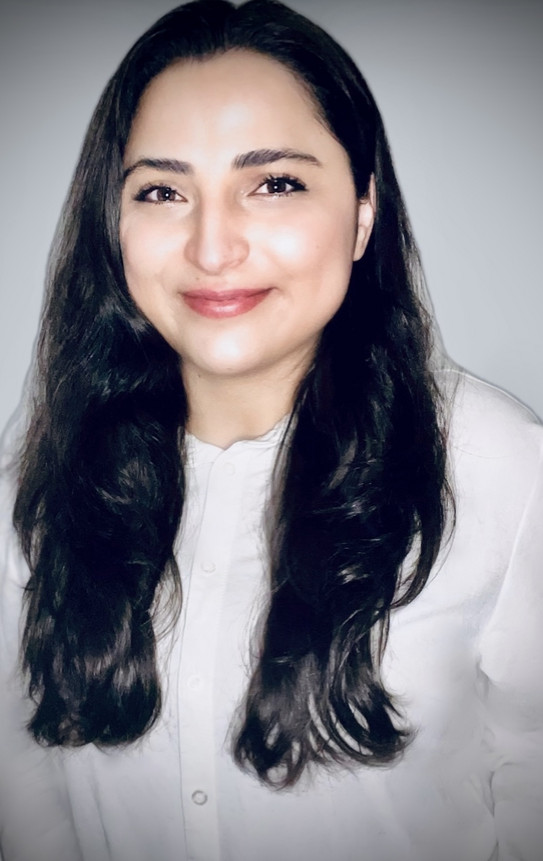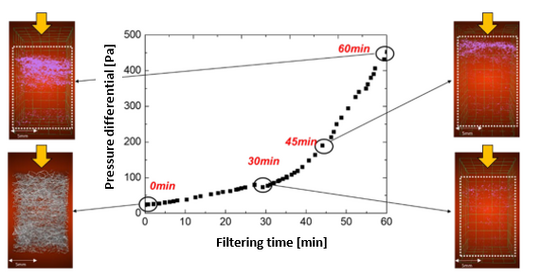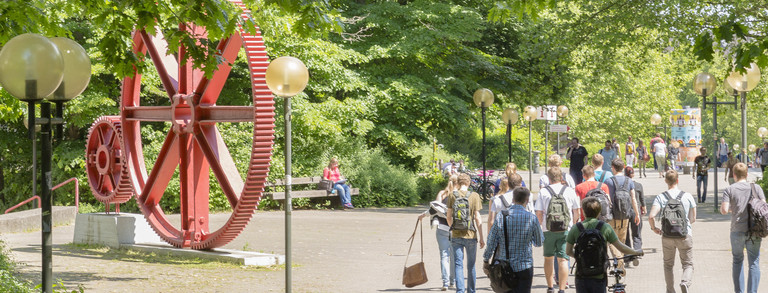Meltem Tastan
Contact
Telephone
(+49)231 755-3962
Address
Department of Biochemical and Chemical Engineering
Laboratory of Solids Process Engineering
Room G3-4.16
Emil-Figge-Str. 68
44227 Dortmund

Contents
Abstract
The aim of this work is to generate experimentally accurate input data as a basis for numerical methods and then to transfer the experimental results to simulations. A particular focus is on the use of imaging methods to analyze the composition and loading in depth filters in order to create a basis for simulations. The simulations can then be used to adapt the filters in terms of efficiency or service life and to increase performance.
Description
Clean air and clean water are precious and indispensable resources that determine the quality of life. The demands on filters and filter products are increasing faster than ever before due to technological progress, modernisation and growing environmental awareness. Demand for filters and filtration products is growing at an average annual rate of 4% [1]. It should be noted that, in addition to new demand, a large proportion of demand is due to the replacement of existing filters, as filters are mass-produced products with a limited service life [2].
Important parameters in determining the service life of a filter are separation performance and energy consumption. These need to be considered in conjunction for ecological and economical operation.[3] In addition to the operating conditions and the size of the particles to be separated, the separation performance of a depth filter also depends on the particles already separated in the filter. As a result, collection performance changes over time. In addition, the particles trapped in the filter reduce the porosity and increase the pressure drop across the filter. This increases energy consumption. To counteract the increasing energy demand during operation, filters are replaced when a certain pressure drop is reached. Depth filters are suitable for separating aerosol particles from the air we breathe. Due to the widespread use of depth filters in ventilation and air-conditioning devices, small optimisations of the pressure difference have a major impact on overall energy consumption.
To solve this problem and better understand the loading behaviour, imaging techniques such as computer tomography are used. This problem was solved by using potassium iodide particles, as these have a higher contrast than the filter fibres. The following figure shows the realisation of this method.

The figure shows the mass distribution of the particles at different points in time within the filter material.In addition, the structure with regard to the size and shape of thedeposits could be determined.[4] The pressure difference and the pressure difference and the filtration performance were successfully correlated with the microscopic parameters (spatially and time-resolved loading).
This showed that deeper impressions can be integrated into the filtration process. The correlations between the operating conditions, the filter structure and the resulting filtration properties serve as a basis for simulations and models that enable faster conclusions to be drawn.
This project is made possible by the funding of the AiF and
is a cooperation of the Laboratory of Solids Process Engineering (TU Dortmund) and the RIF (TU Dortmund).
References
- Irwin M. Hutten: Handbook of Nonwoven Filter Media: Elsevier 2016
- Statista Research Department: Wert der zum Absatz bestimmten produzierten Apparate zum Filtrieren oder reinigen von Luft in deutschlang in den Jahren 2010 bis 2021
- Siegfrid Ripperger, Filtrieren und Separieren, 2019, 150–153 2019.
- K. Hoppe, G. Schaldach, R. Zielke, W. Tillmann, M. Thommes, D. Pieloth, Journal of Aerosol Science and Technology 2022
Curriculum Vitae
| Since 2023 | PhD at the Laboratory of Solids Process Engineering, TU Dortmund |
| 2022 - 2023 | M. Sc. Mechanical Engineering, TU Dortmund |
| 2015 - 2022 | B. Sc. Mechanical Engineering, TU Dortmund |
| Born | August 15th, Avanos (Turkey) |


